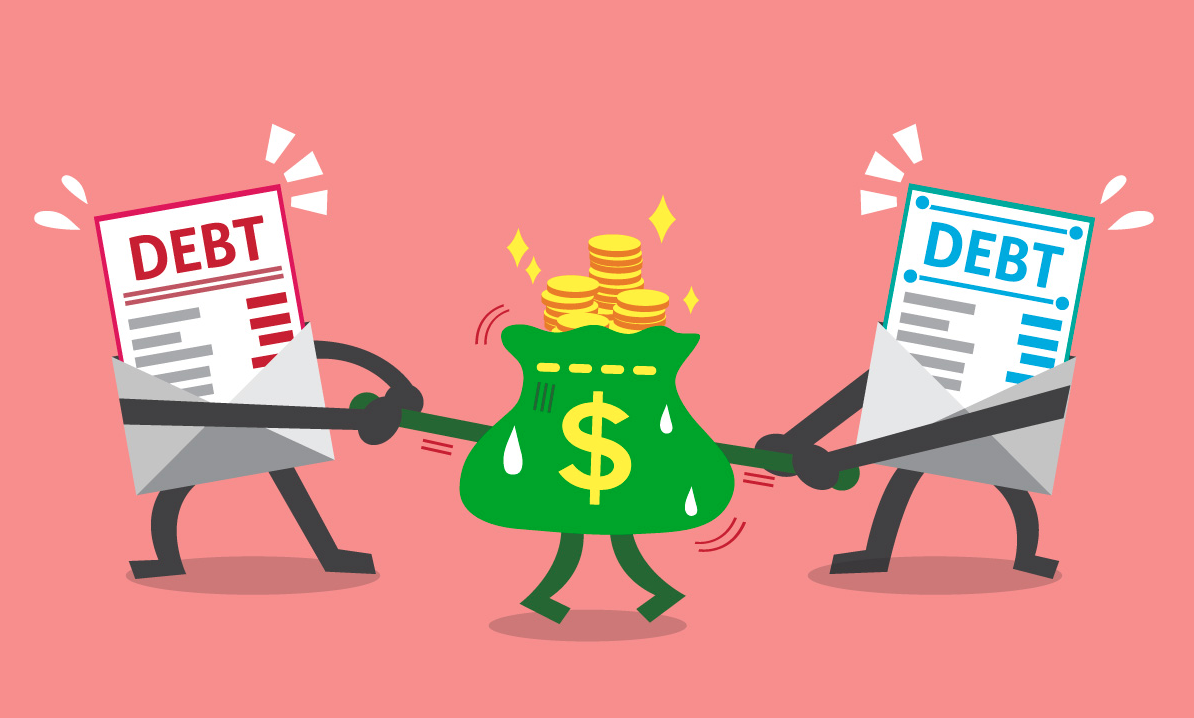.png?width=750&height=145&name=Untitled%20design%20(13).png)

Good Debt vs. Bad Debt
It would seem to most that living debt-free would be a dream come true. While the day-to-day pressure of living that way sounds great, it's not necessarily a smart financial strategy. A very small percentage of the population earn enough money to pay cash for their homes, cars and education. And even if you could, the decision whether or not to carry debt is an important one to consider, especially when there are two types of debt. What most people don’t understand is that there is some debt that can be beneficial to carry.
Good Debt
Education
Good debt is debt to acquire an investment that will grow in value or generate long-term income. Taking out student loans to pay for a college education is the perfect example of good debt. First of all, student loans typically have a very low interest rate compared to other types of debt. As the question becomes more and more relevant if a traditional four year university, followed by two more years of grad school, is a wise investment, lenders are more likely to offer reasonable rates on educational loans. Nevertheless, a college education increases your value as a member of the workforce and raises your potential future income.
Mortgage
Taking out a mortgage to buy a home is usually considered good debt as well. Like student loans, home mortgages generally have lower interest rates compared to other debt, and that interest is tax deductible. Even though mortgages are almost always long-term in duration (30 years in many cases), those relatively low monthly payments allow you to keep the rest of your money free for investments and emergencies. Ideally, your home increases in market value over time, enough to cancel out the interest you've paid over that same period. When compared to the dynamics of renting, it becomes quite clear that taking a loan to finance an asset that will increase your net worth is a smart form of debt.
Car
Most of the time, an auto loan is another example of good debt, particularly if the vehicle is essential to conducting business. While it is not as cut-and-dry as Educational and Mortgage debt, it is still considered a good form of debt. Unlike homes, cars and trucks lose value over time, so it's in the buyer's best interest to pay as much as possible up front so as not to spend too much on high-interest monthly payments.While an auto loan is essential for most people, the amount spent on this loan should be managed carefully. Spending well over one’s ability to afford will never be considered smart, which would turn this form of good debt into bad debt quickly.
Low Interest Rates
Good debt can also simply be low-interest debt. Home equity loans are usually considered good debt (or at least "better" debt), because their interest rates are lower than other types of debt, like auto loans or credit cards. With a home equity loan, the lending institution uses your home as collateral. The amount and interest rate of the loan depends on the appraised value of the house. While it may seem smart to consolidate other debts under a lower-interest home equity loan, carefully consider whether or not you can really make the payments. If not, you could end up losing your home.
Bad Debt
High Interest Credit Cards
Boiling it down, bad debt is debt you use to purchase things that quickly lose their value and do not generate long-term income. In other words, bad debt can be credit card debt. Bad debt carries a high interest rate. Again, this points to credit cards. The general rule is as follows: If you can't afford it and you don't need it, do not buy it. If you buy a $500 TV on your credit card and you only pay the minimum balance on that card, that TV will eventually cost you over $650, and you will most likely want another TV before it’s paid off.
Payday Loans
A payday loan is a type of short-term borrowing where a lender will extend high interest credit based on your income. A payday loan is borrowed against your next paycheck. These loans charge high-interest rates for short-term immediate credit. These loans are also called cash advance loans or check advance loans. These should be avoided. No one ever said they wanted to make less money from working and these loans do exactly that.
Bridge or Hard Money Loans
Bridge loans are credit facilities that real estate developers use to finance their projects. The problem is that these loans are usually very expensive and while they offer immediate availability based on Loan To Value metrics used to valuate the properties they finance, the longer the developer takes to develop the property, the more this loan will eat into profits. Eventually, costs from these loans could sink the developer causing default.
The Bottom Line
Debt is a very slippery slope. The promise of bringing something home today, even though you can’t afford it, is a prospect that has put many in a tough spot. That type of spending can get out of control very quickly. It is easy to ignore. Credit card companies love this dynamic and often take advantage of people who are susceptible to misusing credit cards - like students. Even good debt can put someone in a bad position if mishandled. Who hasn’t run into a realtor who assured you that you can afford more than you thought? Debt should be very carefully considered but when done correctly, can lead to a very healthy financial history.
Not NCUA Insured • No Credit Union Guarantee • May Lose Value • Not a Credit Union Deposit